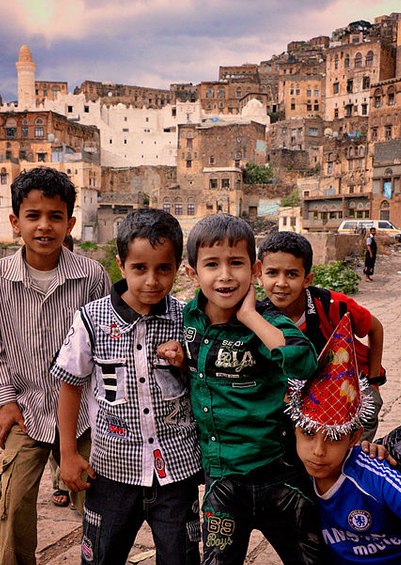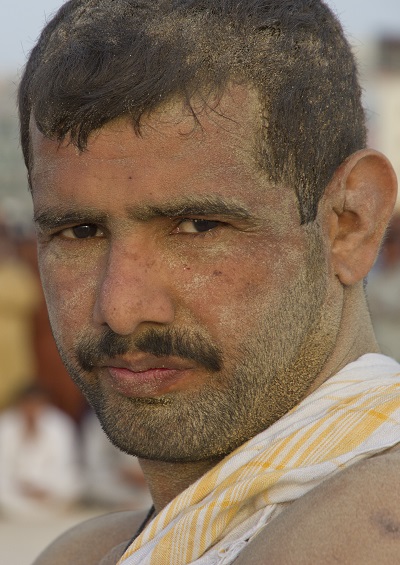Yemen: Youth Bulges and Geopolitics
A youth-heavy population in Yemen could spell increased insecurity in the future.
April 18, 2015

Between now and 2025, 600 million youth in the developing world will compete for just 200 million jobs. Much of this shortfall will occur in majority-Arab countries. Unemployed youths can easily turn into a risk to a nation’s and an entire region’s stability and security.
We wonder: Which country in the Middle East/North Africa region has the lowest median age?
A. Yemen
B. Egypt
C. Syria
D. Palestine
A. Yemen is correct.
The median age in Yemen is 18.6 years, according to the CIA World Factbook. This means that, as of last year, almost half of the 26 million Yemenis were under 18 years of age. Yemen’s median age is 19 years below the U.S. median age and 23.3 years below that of the EU.
Yemen’s economy is small and under-developed. The country has depended for many years on dwindling oil reserves and was unable to provide enough educational opportunities or legitimate jobs for its young people. In addition, Yemen’s government has been weak for quite some time.
As a result, the country has not been in a position to pursue suitable policies to address and mitigate the challenges associated with this stark demographic reality.
Now that a full-blown civil war has unfolded in Yemen and almost a dozen countries are currently participating in military operations in the country, it has become next to impossible to tackle the issue of the youth bulge in any meaningful fashion.
Even before this recent turn of events, Yemeni children were at serious risk of enslavement and abduction for human trafficking, not just in Yemen itself, but also in neighboring Saudi Arabia and Oman. Girls are kidnapped and forced into prostitution in Saudi Arabia’s hospitality and entertainment industry.
Young boys are also at risk of being forced into domestic servitude or prostitution. They bear the additional risk of being forced to fight in Yemen’s national army, clan militias and terrorist groups that operate in the country.
B. Egypt is not correct.
The median age in Egypt is estimated at 25.1 years. That means half the country’s population of 87 million was born in 1989 or later.
In contrast to their elders, those young Egyptians grew up during an extended period of peace following the 1978 Camp David Accords. The country’s armed forces also did not participate in any overseas military actions between the 1990-91 Gulf War and its 2014-15 intervention in Libya.
However, the country’s army began major domestic deployments in 2011 during the Arab Spring, which continue to the present day.
Egypt’s economy has been stalling for some time. In part, this is due to the military’s long and deep involvement in the country’s business and investment affairs, choking market competition. Youth unemployment in Egypt — which stood at 26.3% in 2010 – rose by almost half to 39% in 2013, according to the World Bank.
The country’s large armed forces cannot indefinitely continue to absorb large cohorts of unemployed young men, as was the practice in the past. The government, after all, wants to escape its debt problems and grow the economy. For that to become a realistic prospect, the military will have to unwind itself from the economy and job market.
C. Syria is not correct.
The years of civil war in Syria since 2011 – and the extensive refugee populations displaced by it – have made it difficult to reliably gauge Syrian population statistics. The median age of Syria’s 17 million people is estimated to be 23.3 years, according to the CIA World Factbook.
The World Bank estimated Syria’s youth unemployment rate at 30% in 2013. If and when the civil war ends, this issue — along with other labor market problems — is actually likely to worsen significantly.
Not only will there be more people than jobs, but there will also likely be a mismatch between workers and required skills. The intensity and scale of Syria’s civil war have permanently altered the educational trajectories of many young people in the country.
D. Palestine is not correct.
While not a fully recognized state, Palestine – i.e., the Palestinian Arab populations of the West Bank, Gaza Strip and East Jerusalem – has a median population age of about 20 years, although exact data are hard to come by.
In 2014, about four in 10 Palestinians were no more than 14 years old, according to the Palestinian Central Bureau of Statistics. Meanwhile, a further three in 10 were between 15 and 29 years old. This means that 70% of all Palestinians in the three areas of the country were born no earlier than 1985, just before the First Intifada.
Similar to Egypt, 38% of Palestinian youth were unable to find work as of 2013, according to the World Bank. Without a peaceful and permanent resolution to the Israel-Palestine territorial dispute, most of these young people are unlikely to be able to find civilian work. The wars have destroyed infrastructure and buildings, while the border restrictions with Israel prevent Palestinian workers from crossing easily to fill Israeli job openings.
Takeaways
As of 2014, almost half of the 26 million Yemenis were under 18 years of age.
Yemen’s median age is 19 years below the U.S. median age and 23.3 years below that of the EU.
Yemen is not in a position to pursue suitable policies to address the challenges of a youth-heavy population.
Yemen is not in a position to pursue suitable policies to address the challenges of a youth-heavy population.
Young Yemeni boys are forced to fight in Yemen’s national army, clan militias and local terrorist groups.
Author
The Globalist
Read previous

Global Culture
The Sand Lords of Dubai
April 18, 2015